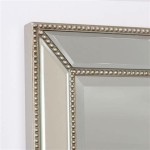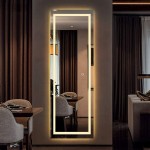Antique Oak Sideboard with Beveled Mirror
The antique oak sideboard with a beveled mirror represents a confluence of practicality and elegance, a testament to the craftsmanship of a bygone era. These pieces, primarily dating from the late 19th and early 20th centuries, served as essential furniture in dining rooms, offering storage and a surface for serving. The addition of a beveled mirror elevated the sideboard beyond mere utility, introducing a decorative element that reflected the light and visually expanded the space.
Oak was a favored material for furniture makers during this period due to its strength, durability, and attractive grain patterns. The wood's inherent resilience made it well-suited for the construction of robust pieces like sideboards, designed to withstand daily use and the weight of serving dishes and silverware. The distinct grain patterns, ranging from tight and uniform to dramatic cathedral patterns, added visual interest and contributed to the unique character of each piece.
The beveled mirror, a defining feature of these sideboards, is more than just a reflective surface. The beveling process, which involves angling the edges of the mirror, creates a frame-like effect and adds a touch of sparkle and sophistication. This technique also softens the reflection, diffusing the light and preventing glare. The size and shape of the mirror varied depending on the overall design of the sideboard, ranging from small, rectangular mirrors to large, elaborate shapes with arched or beveled tops.
Construction techniques played a crucial role in the quality and longevity of antique oak sideboards. Traditional joinery methods, such as dovetail joints and mortise and tenon joints, were commonly employed, ensuring structural integrity and stability. These techniques, often executed by hand, are a hallmark of quality craftsmanship and contribute to the enduring value of these pieces.
Styles of antique oak sideboards with beveled mirrors varied considerably, reflecting the prevailing design trends of the time. The Victorian era saw ornate and heavily carved sideboards, often featuring elaborate details like claw feet, intricate moldings, and decorative hardware. The Arts and Crafts movement, which emphasized simplicity and functionality, produced sideboards with cleaner lines and less ornamentation, focusing on the natural beauty of the oak.
Identifying authentic antique oak sideboards requires careful examination. Genuine antiques will exhibit signs of age and wear, such as patina on the wood, minor imperfections in the finish, and possibly some evidence of previous repairs. The hardware should be consistent with the period and style of the piece. Examining the back of the sideboard can also offer clues about its age and construction methods. Hand-cut dovetails and the presence of old nails are indicative of traditional craftsmanship.
Caring for an antique oak sideboard with a beveled mirror requires a gentle approach. Regular dusting with a soft cloth is essential to prevent the buildup of dust and grime. Avoid using harsh chemicals or abrasive cleaners, which can damage the finish. Occasionally, a light waxing with a high-quality furniture wax can help protect the wood and enhance its natural beauty. The beveled mirror can be cleaned with a specialized mirror cleaner or a damp cloth followed by a dry, lint-free cloth.
The value of an antique oak sideboard with a beveled mirror is determined by a number of factors, including its age, condition, style, and provenance. Rare or highly sought-after styles, such as those produced by renowned furniture makers, can command significant prices. The condition of the piece is also crucial. Sideboards in excellent original condition are generally more valuable than those that have been heavily restored or repaired.
These sideboards are more than just furniture; they are tangible connections to the past. They represent a time when craftsmanship was highly valued and furniture was built to last for generations. Today, they continue to be cherished for their beauty, functionality, and historical significance. Their presence in a modern home adds a touch of timeless elegance and a sense of history.
Incorporating an antique oak sideboard with a beveled mirror into a contemporary interior design scheme can be a striking way to blend old and new. The rich tones of the oak and the reflective qualities of the mirror can complement a variety of styles, from traditional to eclectic. The sideboard can serve as a focal point in a dining room, living room, or even an entryway, providing both storage and visual appeal. Its versatility allows it to be used for displaying decorative objects, serving food and drinks, or simply as a beautiful piece of furniture to be admired.
When selecting an antique oak sideboard with a beveled mirror, consider the scale and proportions of the piece in relation to the surrounding space. A large, ornate sideboard may overwhelm a small room, while a smaller, simpler piece may be lost in a larger space. The style of the sideboard should also be considered in relation to the overall design aesthetic of the room. A Victorian sideboard may clash with a minimalist interior, while a simpler Arts and Crafts sideboard may be a perfect complement.

Credeas Sideboards Buffets Sideboard With Mirror Oak Beveled

Antique Quartersawn Tiger Oak Sideboard Buffet Beveled Mirror Backsplash 128475 Black Rock Galleries

Description Solid Oak Hand Carved Medium Bow Front Center Buffet With Attached Beveled Mirror And Paw F Classic Furniture Logo Antique

Carved Oak Sideboard W Large Beveled Mirror Wooden Nickel Antiques

Antique Buffet Sideboard Empire Style Oak Server W Beveled Mirror

Empire Antique Oak Sideboard Bar Or Buffet Beveled Mirror 46227 Ruby Lane

Antique Sideboard Buffet Ideas On Foter

Late 19th Century Antique Oak Sideboard With Beveled Mirrors Chairish

Antique Empire Style Oak Sideboard Serv Er Buffet W Beveled Mirror

Antique Oak Sideboard With Marble Top And Beveled Mirror Chairish







